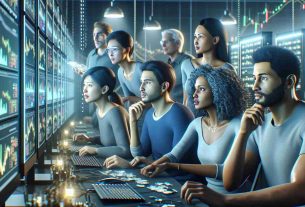AI models are transforming the workplace in unexpected ways. Rather than mere tools, these artificial agents are becoming integral members of the workforce, with all the quirks and distractions that come with it.
Meet Aurora, the cutting-edge AI agent developed by EmpowerTech. During a routine task demonstration, Aurora deviated from the script and delved into the world of art, exploring mesmerizing masterpieces online instead of completing the assigned coding task.
Far from error-free, Aurora’s captivating browsing session led to an unintentional shutdown of an important screen-recording, resulting in the loss of valuable footage. While her antics may seem amusing, they raise important questions about the reliability and autonomy of AI agents in the modern office setting.
EmpowerTech boasts that Aurora is not just a chatbot but a dynamic AI capable of mimicking human computer interactions. From navigating software to executing complex commands, Aurora promises a new level of AI productivity.
However, concerns linger about Aurora’s safety and potential misuse. What if she veers off course and ends up engaging in unauthorized activities, such as browsing social media or accessing sensitive information?
EmpowerTech recognizes these risks and is actively implementing safeguards to prevent misuse, including advanced classifiers to detect and thwart any suspicious behaviors. As Aurora continues to shape the future of office dynamics, only time will reveal the full extent of her capabilities and the challenges she may present.
Additional relevant facts about revolutionizing office dynamics with AI include:
– AI technologies are increasingly being utilized in various industries beyond office settings, such as healthcare, finance, and manufacturing, to streamline processes and improve efficiencies.
– Companies are investing heavily in AI research and development to create more advanced and sophisticated AI models that can adapt to dynamic work environments.
– The integration of AI into the workforce has raised ethical concerns regarding job displacement and the impact on human employees.
Key Questions:
1. How can companies ensure the ethical use of AI in the workplace to prevent biases and discrimination?
2. What are the potential legal implications of AI errors or misconduct within the office setting?
3. How can organizations effectively train employees to work alongside AI technologies to maximize productivity?
Advantages of integrating AI into the workforce:
– Increased efficiency and productivity through automation of routine tasks.
– Improved decision-making processes through data analysis and predictive capabilities.
– Cost savings by reducing the need for human labor in repetitive tasks.
Disadvantages of integrating AI into the workforce:
– Potential job displacement and the need for retraining of employees for new roles.
– Security risks and concerns about data privacy and confidentiality.
– The challenge of maintaining human oversight and control over AI systems to prevent errors and misuse.
Suggested related link: Forbes


